Menu
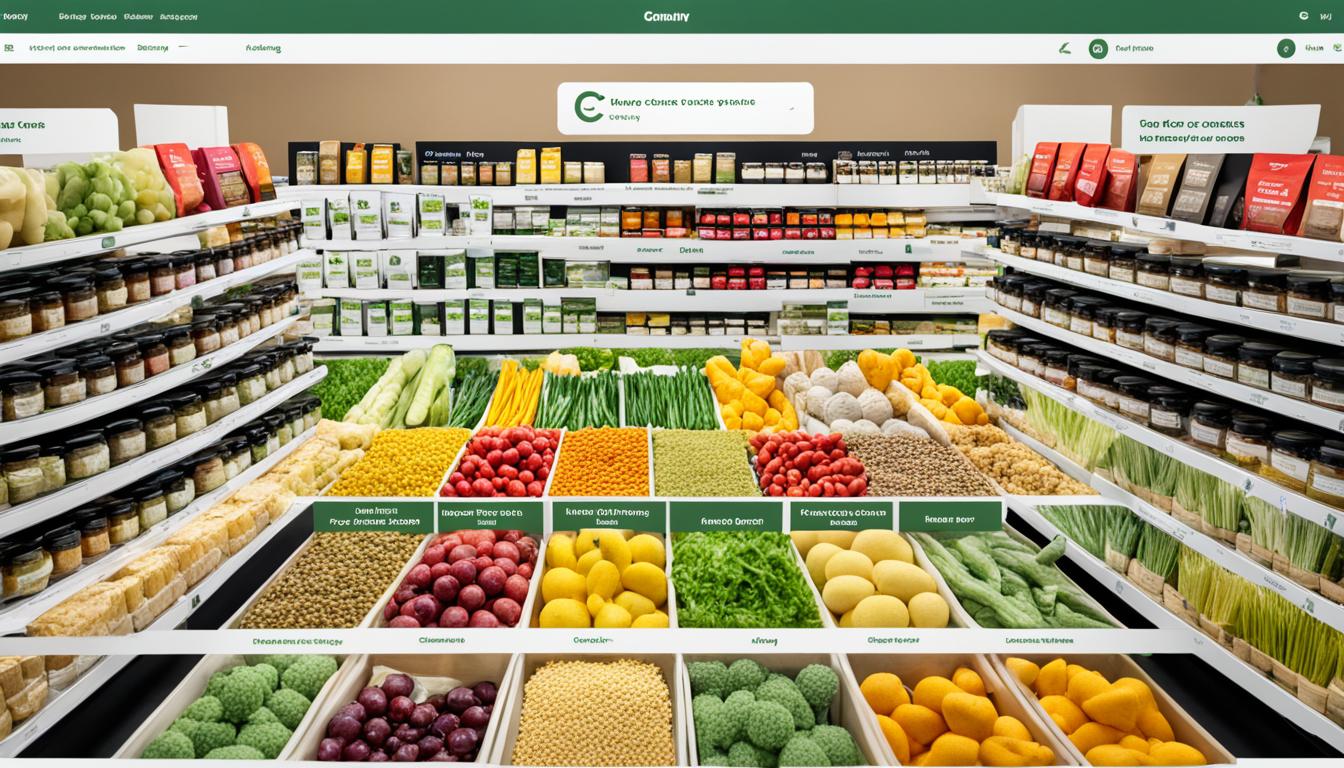
Getting a new customer can cost 5-25 times more than keeping an old one. This comes from a report by the Harvard Business Review. It shows how crucial it is to keep current customers happy when selling farm produce online. To save on getting new customers, farmers and food suppliers should look into ways to sell more to their current ones.
Making things personal is key in this approach. A study found that 59% of people like getting personalised tips when they shop. In the digital farming world, this helps a lot. Custom advice can really boost what customers buy and how happy they are with their purchases.
For example, getting customers to buy more or better products is called upselling. This works well if you have different sizes to choose from. On the other hand, cross-selling is when you offer more items that go well with what’s already bought. This is great if you have a range of products to sell. Both methods help increase the average order price. Also, Local Line suggests using smart before and after selling methods. This can help more without making customers feel annoyed.
Teaching farmers to upsell can boost farm profits. This technique prompts customers to buy more or premium items. It’s about selling higher-value products or bundles that are hard to resist. To do this right, farmers need to know what upselling entails and the gains it brings.
Upselling in farming means convincing customers to pick a more expensive version of what they were going to buy. For example, a farmer might recommend purchasing a bigger meat pack. Or, suggest getting a full CSA share instead of just a half. This method lifts the average purchase value, which grows the income of the farm.
Upselling can hike up the income of a farm. It does this by making each sale worth more. Harvard Business Review says getting a new customer costs a lot more than keeping an old one. So, upselling is a smart move. It’s also shown that 59% of people decide to buy because the service is tailored to them. Knowing customer preferences helps to offer exactly what they want.
It’s a good rule not to push any sales rise over 25% from what a customer usually buys. This avoids making people feel pushed to spend more than they want. Finding the right balance keeps customers open to buying. When launching a new product, it’s a great time to encourage buying more. People are open to upgrades with something new. Plus, loyalty schemes can motivate more spending, making upselling even more effective.
| Metric | Implication |
|---|---|
| Cost of acquiring a new customer | 5-25 times more expensive than retaining existing ones |
| Influence of personalisation on purchase decisions | 59% of shoppers are affected by personalised experiences |
| Recommended upsell increase | Not more than 25% of the customer’s previous order |
| Effective upsell techniques | Customisation, loyalty programmes, new product launches |
Using smart and personalised upselling can do wonders for a farm’s earnings. By focusing on keeping customers happy, farms can thrive in the long run.
Cross-selling in farming means suggesting products that go well with what’s already being bought. This concept boosts sales diversification and makes customers happier. It also increases the amount customers spend.
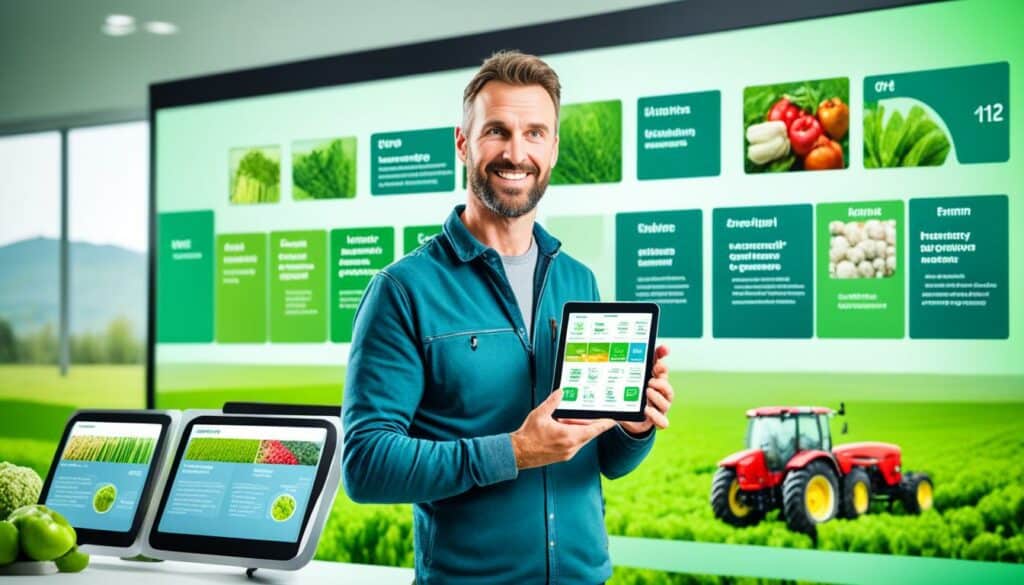
Cross-selling in farming is about recommending things that go with what the customer is already getting. For example, suggesting fruits along with yoghurt or essential proteins with herbs. This makes the purchase more valuable and helpful to the customer.
There are many ways to cross-sell farm products. Adding herbs to a protein order or offering dairy products with fruits is a good start. It’s also effective to suggest recipes that use several items. For example, pairing lettuce with salad dressings or croutons.
Cross-selling helps farmers sell a variety of products. Finding new customers is more costly than keeping the ones they have. So, it’s smart to use cross-selling to grow with current customers.
Showing the price per pound helps customers see the value in buying more. This can increase how much they spend without feeling like it’s too much. Personalised product suggestions can also make a big difference. Amazon’s sales went up 35% when they started recommending more products to customers.
| Metric | Impact |
|---|---|
| Customer Retention | 5-25x cheaper than acquisition |
| Personalisation | Influences 59% of shoppers |
| TaskUs Increase | 20% in cross-selling |
| Amazon Sales Boost | 35% after cross-selling |
In the end, using smart cross-selling in farming boosts revenue and keeps customers coming back. By suggesting items that complement what’s already being bought, farmers can make more profit. This also adds value for customers.
Being successful in selling farm products online needs a smart approach. You should mix digital marketing with knowing when things sell best in the year. Matching products that naturally go together and using things that are in season can make customers buy more and happier with their purchase.
Pairing things that naturally fit together can boost your sales. This could be things like suggesting fresh herbs with vegetables or cheese with bread. It makes your offer more attractive to customers. This not only means they spend more but also makes their shopping experience nicer.
For example, suggesting all the ingredients for a pasta meal can be really helpful. A pasta kit with tomatoes, basil, and cheese can make shopping convenient for your customers. This way of selling can greatly increase your sales and customer loyalty.
Tapping into what’s in season is a great way to sell more. It meets your customers’ expectations and highlights your produce’s freshness. Seasonal deals can make your products stand out more. This can lead to better sales.
During the summer, you could highlight a fruit basket with the best, freshest berries. And in autumn, a package of root vegetables could be very appealing. These types of offers can draw in more shoppers, as many customers enjoy shopping that feels personal.
These strategies can help you be smarter with your online promotions. They offer guidance on how to mix matching products and seasonal deals. This approach should not only make your customers happier but also bring you more income, supporting the growth of your farm.
| Method | Benefit | Example |
|---|---|---|
| Pairing Complementary Products | Enhances order value and customer experience | Basil with tomatoes, cheese with bread |
| Promoting Seasonal Items | Increases relevance and appeal | Berry baskets in summer, root vegetables in autumn |
One top strategy in selling farm produce is putting items together in an attractive way. This makes it more tempting for customers to buy because they see they’re getting a good deal. Sellers should look at what people buy together and make bundles that fit that exactly.
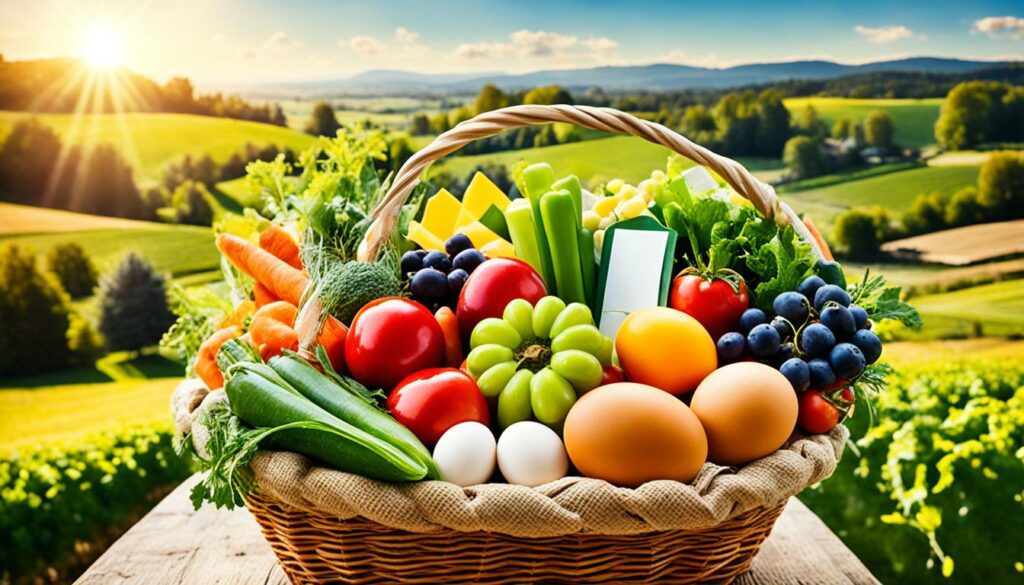
To make bundles that people will love, think about what goes well together. For example, match vegetables with herbs, or add dairy products to bread. These make deals that are too good to pass up. 41% of those in charge of sales are planning to make more from current customers. Bundling is a clever way to help do this.
“By aligning bundled offerings with customer needs, we incentivise larger purchases while ensuring the perception of added value.”
Setting prices just under a whole number, like £9.99 instead of £10.00, can make the offer more appealing. Strategies like buying three for the price of two feel like a great deal. This pushes customers to buy more, which helps to sell a lot of items at once.
About 56% of sales leaders think making more money is very important. These pricing plans can help by raising how much each bundle sells for. And 65% want to keep their customers coming back. Great bundles that feel like a win for the customer do this very well.
With smart bundling and pricing, farmers can boost how much they sell and grow their income. This makes shopping easier for the customer and brings more money in for the farm.
Adding a personal touch in the agricultural realm really helps to sell more and upsell better. When companies use what they know about their customers, they can offer exactly what people want. This approach boosts sales and makes customers happier.
Customizing offerings with agricultural customer data application can change the game. TaskUs, for example, saw a 30% jump in up-sells and a 20% climb in cross-sells because they personalised their marketing. The key is to gather data on what customers like and have bought before. This data helps companies spot trends and even guess what customers will buy in the future. It all makes for more effective selling and upselling.
Per Demand Farm, using data to get customer behaviour can majorly boost sales. A clear case is Amazon, which saw a 35% sales lift in 2006 by adding up-selling.
Marketing in the farm sector means telling a story that your customer understands and likes. With customer data, farmers can offer deals that feel like they were made just for that person. This can mean suggesting similar items to what a customer has bought before or recommending something a bit fancier. It’s super helpful in farming because products change with the seasons.
Keeping the customers you have is way smarter financially than always trying to get new ones. Data from the Harvard Business Review says winning a new customer can cost 5 to 25 times more than keeping an old one. So, turning to a marketing strategy that focuses on what your current customers like brings good results and saves money.
In areas like SaaS, selling more to your existing customers can make up most of your money, from 70% to 95%. This really shows how powerful personalisation can be. In the end, reaching out to customers in a way that feels personal makes them happier, more loyal, and brings in more money.
Different sales stages call for various approaches to improve customer interaction and increase sales. It’s crucial to use unique methods for pre-sale upsell and post-sale marketing. These methods bring different benefits to the customer sales journey.
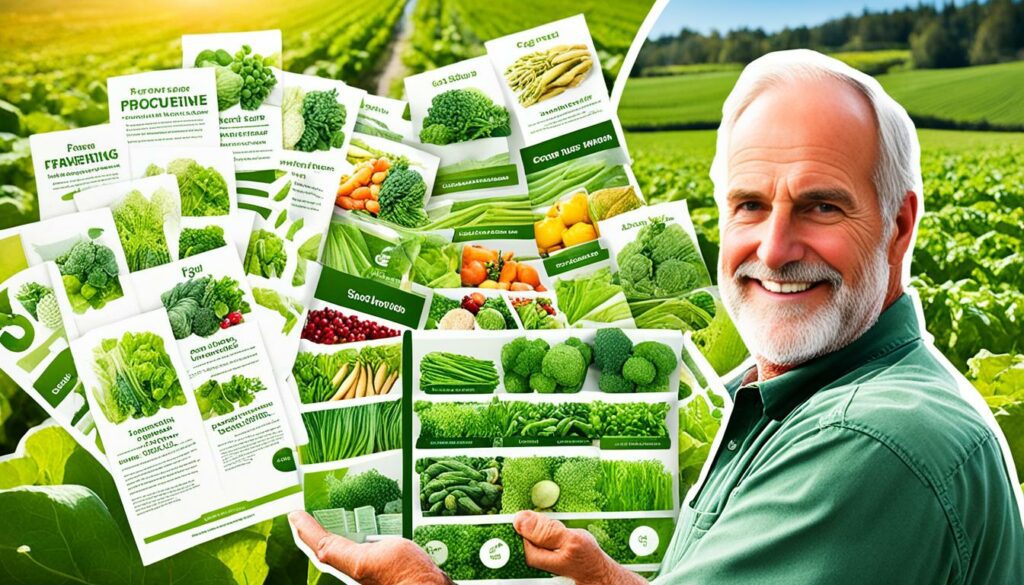
Pre-sale upselling grabs the customer’s attention before they buy. This method can boost the value of their order. For example, recommending a farmer’s full vegetable box over a half can increase the sale. It shows the customer the great value they get for their money.
After the first sale, post-sale marketing kicks in. Post-sale cross-selling involves suggesting more items that complement their recent purchase. Things like follow-up emails and exclusive offers work well. These encourage customers to buy again and build long-term loyalty.
Pre-sale and post-sale methods need to fit the interaction, online or offline. This way, customers see the true value in what you offer at every step of their journey.
Designing a customised sales strategy for farms requires looking at many things. This includes what the farm sells, who the customers are, and how the farm runs. It’s key to fit these strategies to the farm’s special needs. Picking the correct sales tactics in agriculture can make a farm thrive, not just survive.
The Harvard Business Review says getting new customers can be 5-25 times more costly than keeping the old ones. This underlines the importance of a good farm business sales planning strategy. The strategy should aim at selling more to the existing customers. For instance, the USDA’s Value-Added Producer Grant helps farmers make new goods. This makes it easier to sell more to current buyers.
It’s vital to customise your sales methods for your farm. It helps in earning more money and keeping customers happy.
The USDA also offers help like disaster aid and funding for environment projects. For example, the Farm Storage Facility Loan Program gives low-interest loans. It helps with storing more products to sell.
Overall, the best way ahead involves adapting your sales tactics in agriculture to what your farm needs. This might mean selling more of what’s already popular, or suggesting something extra to customers. Every farm is different, so the strategy should suit your unique situation and goals. With a smart plan, your farm can do better and last longer.
Looking at success stories from local farmers’ markets and online farm stores teaches us a lot. These stories show how clever cross-selling and upselling bring great results.
Local farmers’ markets are perfect for showing off successful farm market sales tactics. Pairing products like cheese with wine or jam with fresh bread can make customers spend more. For example, at TaskUs, up-selling rose by 30% and cross-selling by 20% using these methods. This shows that offering personalised recommendations really boosts income.
Success also comes from being clear with customers about why extra products or better items are worth it. This gains trust, like in SaaS businesses that see a 70-95% rise in revenue. Testing and analysing feedback improves how convincing these tactics are.
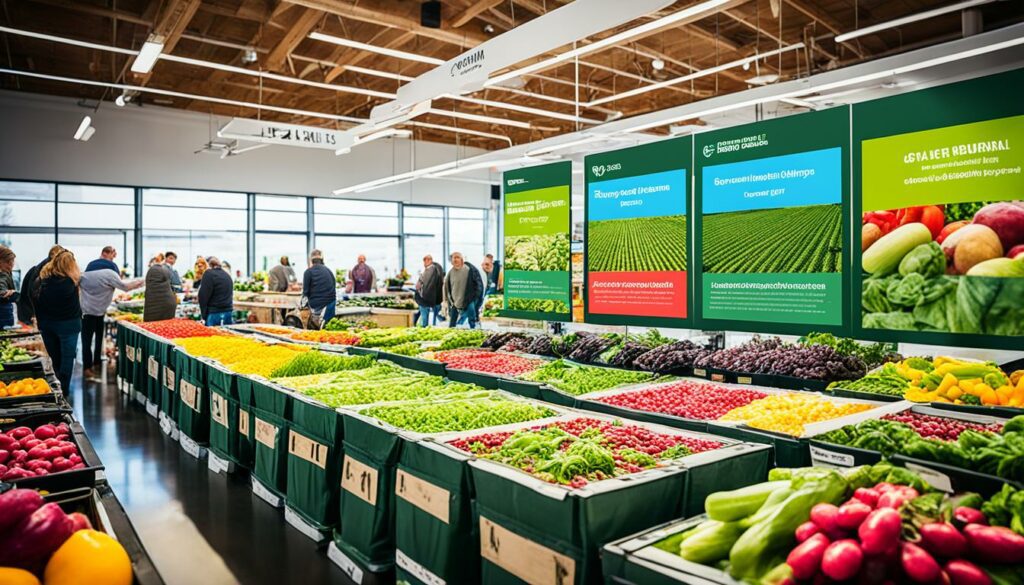
Online farm shops are great for trying out new upselling and cross-selling techniques. This can lead to big success, as seen with Amazon’s 35% sales jump. Offering suggestions based on what a customer likes can increase sales by up to 20%.
It’s much cheaper to keep a customer than to get a new one. With existing customers being likely to buy again, cross-selling is key. So, using data from surveys and past buys makes your cross-selling and upselling much better. This also makes customers happier with their experience.
| Strategy | Result | Example |
|---|---|---|
| Bundling Products | Increased Average Order Size | Cheese and wine pairing |
| Real-time Suggestions | 20% Sales Boost | Amazon’s dynamic cross-selling |
| Upselling to Premium Products | 35% Sales Increase | TaskUs’ up-sell strategy |
These real-life examples from farm markets show that cross-selling and upselling work. It doesn’t matter if it’s a market stall or an online shop. These tactics boost sales, keep customers coming back, and help businesses grow.
Using tech can make sales easier and boost how much your customers like you. Tools like selling online and keeping track of customers really help.
Today, farms need to sell online to keep up. Online sales let customers order with ease and help farmers handle stock better. They come with safe ways to pay, let customers leave reviews, and help farmers keep an eye on what’s in stock in real time.
It’s vital for farms to use CRM, which stands for Customer Relationship Management, to understand buyers. These systems show what customers like, what they’ve bought before, and when they’re most likely to buy. With this info, farmers can send out ads that are just right for each customer and suggest other products that might interest them. This helps keep customers coming back and feeling valued because they get messages and deals meant just for them.
Using these tools in farm work not only makes things run more smoothly but also makes customers happy and increases sales with up-to-date farm sales technology.
Showcasing the clear benefits and top quality of our farm products is key. This builds customer trust. It also shows them why they should buy more. We focus on the price-per-pound and overall quality to influence buying decisions.
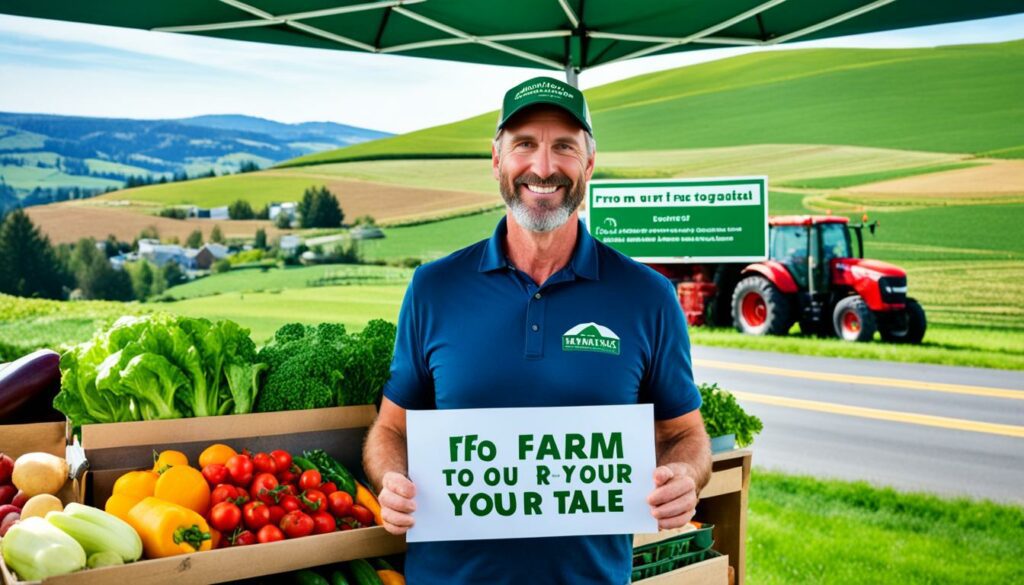
Talking about the price per pound is a smart way to show our product’s value. It helps customers understand what they’re getting for their money. This makes customers trust us more and encourages them to buy bigger amounts.
Marketing product quality can really change how people see what they buy. We talk about our products being organic and farm-fresh. We also mention the unique benefits. This makes customers happier with their purchase. It also supports selling more products at once, which boosts our sales.
In the world of sales, finding balance is key. I often see a struggle between helping and selling, and finding new or sticking with old customers. It’s important to keep clients interested without pushing too hard. This means finding a way to balance these opposing goals well.
Getting the marketing balance right matters a lot. Studies show that selling in a balanced way can boost both revenue and client happiness. But, if you push too many extra products, it can confuse roles, tire out employees, and make clients less happy. So, it’s vital to not overdo it. Keep talking to your clients to figure out what they really need. This will bring lots of great chances without any stress.
It’s all about finding the right mix between selling hard and offering real value. This way, you can keep sales going without annoying your clients. Having staff who know how to both find new customers and keep the old ones happy is very important. Look for people who are good at promoting things and keeping problems away, and who can judge what to do. Also, using automatic plans and keeping track of your progress can help a lot.
Noteworthy is that keeping old customers is much cheaper than finding new ones, so having a good way to not lose them is a must. Every year, check how well your plays are working and ask your customers for tips. This will make your clients stay interested, and will help you not stress over sales too much.
| Factors | Desired Approach | Outcome |
|---|---|---|
| Marketing Frequency | Optimised and Relevant | Reduced Upsell Fatigue |
| Sales Tactics | Balanced and Value-driven | Higher Customer Satisfaction |
| Employee Skills | Ambidextrous with Strong Judgement | Increased Sales and Retention |
| Client Engagement | Regular and Insightful | Steady Quality Opportunities |
| Playbook Optimisation | Annual Reviews | Consistent Performance |
Boosting sales through well-designed agricultural promotions is key. Creative seasonal marketing and tempting discount offers help upgrade both cross-sells and upsells. This strategy leads to more sales and happier customers.
Seasons are important for promoting farm products. Pairing fresh fruits and veggies with suitable items for that time of year boosts interest. For instance, in summer, offering berries with organic soaps might catch the eye of health buffs. On the other hand, autumn could feature apples with baked goods like pies. These campaigns make products more relevant and encourage extra purchases.
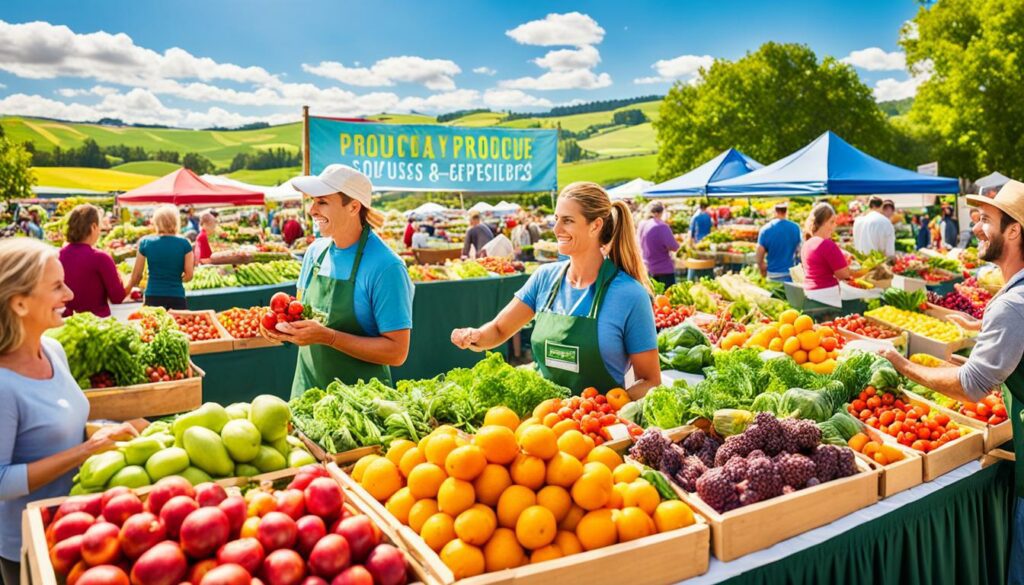
Special offers and discounts are powerful in agriculture sales. This is especially true for those seeking healthy, pesticide-free, and organic foods. By showcasing the quality and safety of our products, we attract these buyers. Varying our product combinations, like coupling fresh veg with handmade household items, helps us stand out. Adding time-limited discounts on bundle buys, like cupcakes or farm meats, prompts quick sales and customer returns.
Adding effective cross-selling strategies to your farm business can lead to great results. Learn from industry leaders like TaskUs. They had a 20% increase in cross-selling. Amazon increased sales by 35%. This shows how these methods can really boost your profits. Let’s dive into some top tips for farm cross-selling.
Start with product relevance. It’s vital to suggest products that go well with what the customer is already buying. For instance, teaming up dairy products with fresh fruits is a smart move. Knowing what your customers like is essential. This comes from collecting and using customer data wisely.
Next, put customer engagement first. Reach out to them with emails that feel personal, give recommendations on your site, and offer deals that meet their needs. Building a strong connection with customers is key. After all, it costs less to keep a customer happy than to find a new one. Harvard Business Review points this out.
Using clever bundles can also make a big difference in your farm’s cross-selling. By grouping products together and offering them at a special price, you encourage customers to buy more. Many businesses, including SaaS companies, have found that up to 95% of their sales come from these types of offers.
Don’t forget about the power of careful market research. Stay updated on the latest from the USDA like commodity prices and upcoming weather. This info, along with details about loan schemes and how food is checked, helps you keep up with market trends. It lets you tweak your products to meet what customers are looking for.
| Statistics | Results |
|---|---|
| TaskUs | 20% increase in cross-selling |
| Amazon | 35% boost in sales |
| SaaS businesses | 70-95% revenue from cross-selling |
| Customer acquisition cost | 5 to 25 times more than retention |
To excel in cross-selling in the farming sector, use these top tips. Tap into product relevance, reach customers in personal ways, put out smart bundles, and keep your eye on the market. These steps not only increase sales but also build loyalty with your customers over time.
Cross-promoting farm goods can significantly boost sales and customer loyalty. Balancing promotions with effective communication can result in long-term success for farmers.
Farmers should always look at their financial situation, especially with costs rising. It helps them make good pricing choices and keeps their business sustainable. Talking openly about raising prices can ensure customers understand and stay loyal. This is like what microbreweries do with their strong customer base and premium prices.
Today, people want high-quality, local items, for example, goat cheese. It’s key for farmers to show why their products are special. Those who focus on loyal customers and sustainable agriculture tend to do better. They can use different ways to sell, like online or at farmers’ markets, to reach more people.
To grow, farmers must merge old marketing ways with new ones and personalise their approach using customer data. It’s important to have a strong brand, always have products available, and use social media for talks. This can boost sales, teach people about local food’s benefits, and create strong bonds with customers.
Cross-selling in agriculture means suggesting extra items to go with what a customer is buying. For instance, it could be recommending herbs to go with proteins or suggesting fruits with yogurt. This method helps farmers sell more and makes customers happier.
Upselling encourages customers to buy more or to buy better versions of the products. This increases the money made from each sale and makes each customer buy more. It also helps farms earn more money.
Online, farmers should pair goods that go well together and take advantage of what’s in season. They can also put together packages of items needed for a recipe, which is often very appealing to customers.
Bundling is when products are put together and sold at a set price. It makes customers feel they are getting a good deal. This often makes them buy more things at once, raising the overall sale amount.
Personalisation uses what a customer likes to offer them things they’re likely to want. It makes suggestions more powerful in influencing what the customer buys. This makes the selling strategies more effective.
Pre-sale upselling tries to make the sale’s value bigger before the customer pays. Post-sale cross-selling aims to get the customer to buy again after their first purchase. The first happens before the sale, the latter happens after.
Figuring out the best approach means looking at what they sell, who they sell to, and their main goals. Doing this helps in deciding on either upselling or cross-selling. A plan made just for their farm works best.
Local markets do well with bundled prices, while online stores often show higher-priced items next to lower-priced ones. Learning from these successes can help farmers improve their sales methods.
E-commerce makes it easier to sell online, while CRM systems help keep track of customer choices. These technologies allow for marketing that’s more personal and sales that are smarter.
Showing exactly what they’re getting, like the price per weight, lets customers see the value. Talking about the top quality of the products also helps. This makes customers more open to buying more.
Too much selling turns customers off. Farmers should only talk about buying more when it brings real benefits. This way, customers stay interested instead of getting annoyed.
Promotions linked to the seasons or farming events can encourage more from customers. This could include limited-time discounts or special deals. Such ads should always catch what the customer wants.
For successful cross-selling, make sure the product fits well, engages the customer, and is bundled smartly. Using what you know about the customer and keeping up with what they’d like are crucial for better sales.